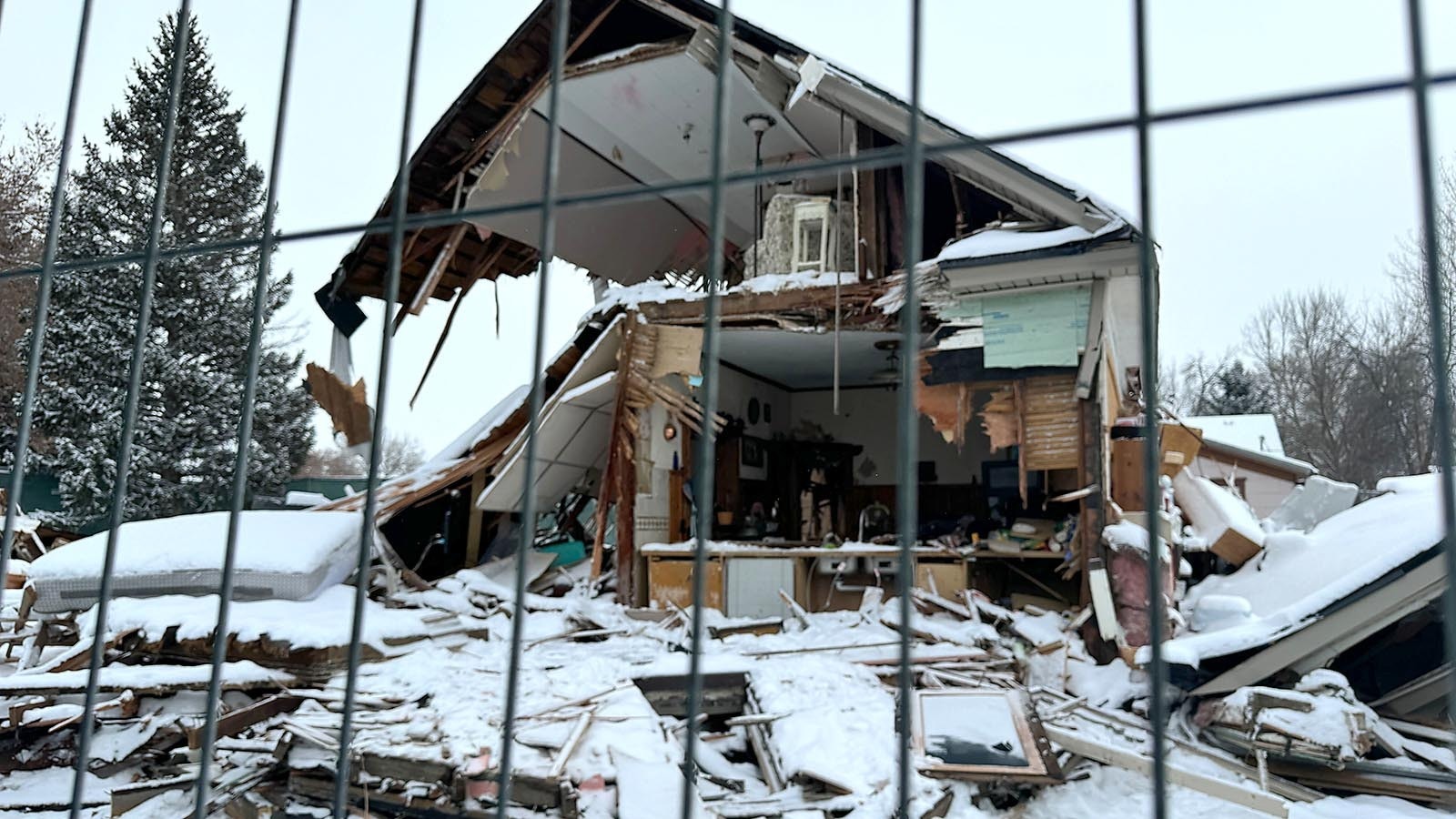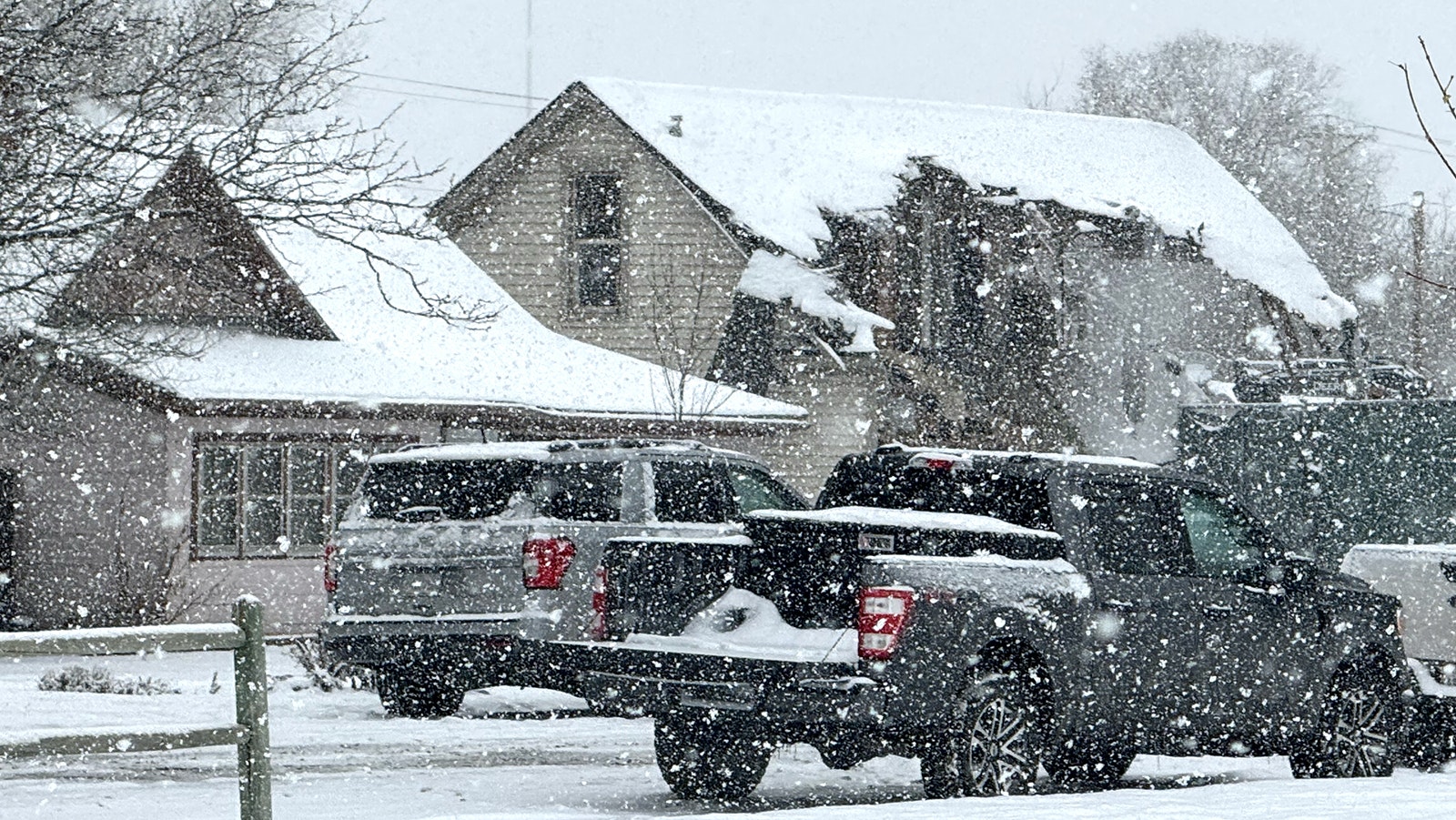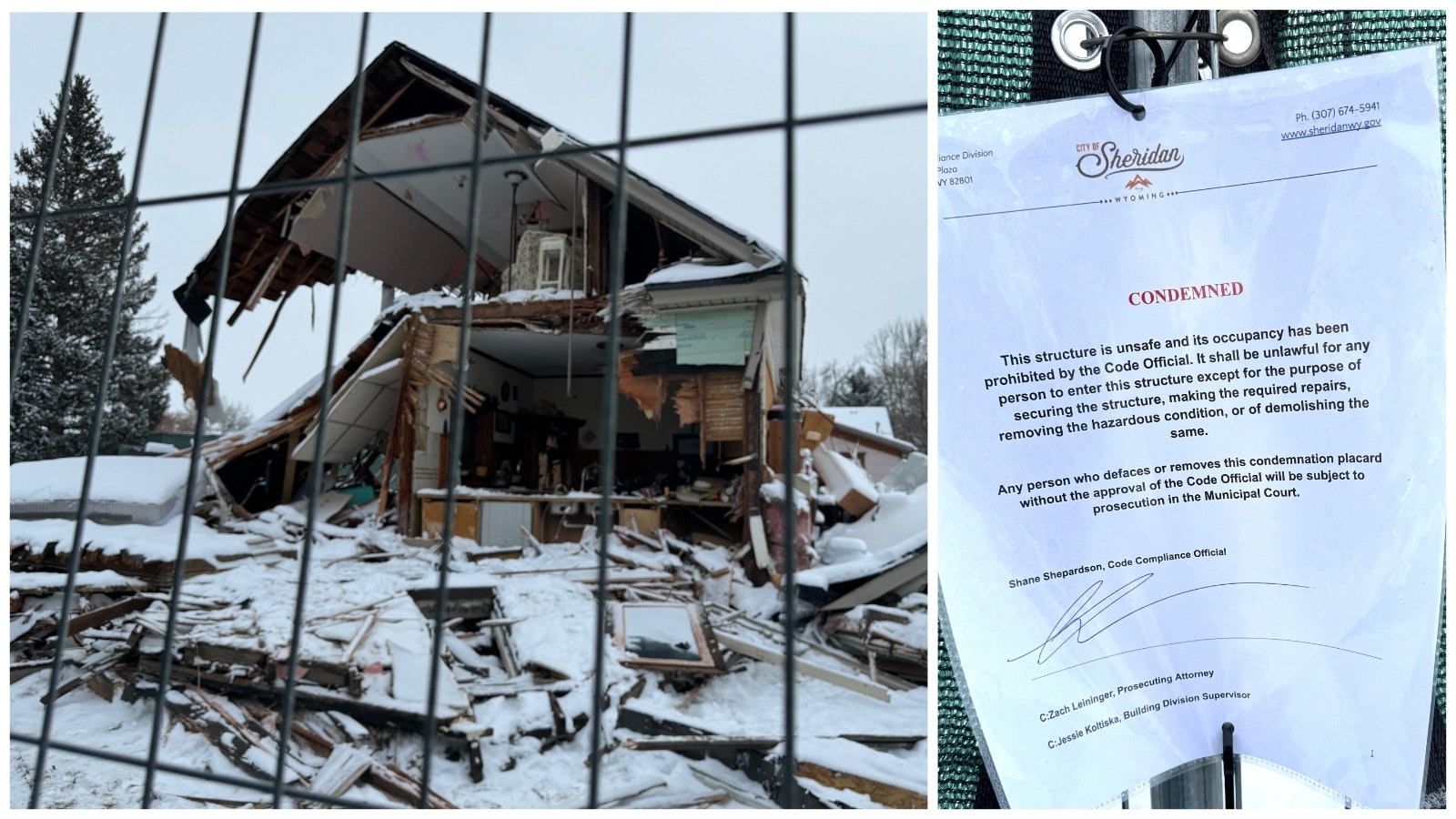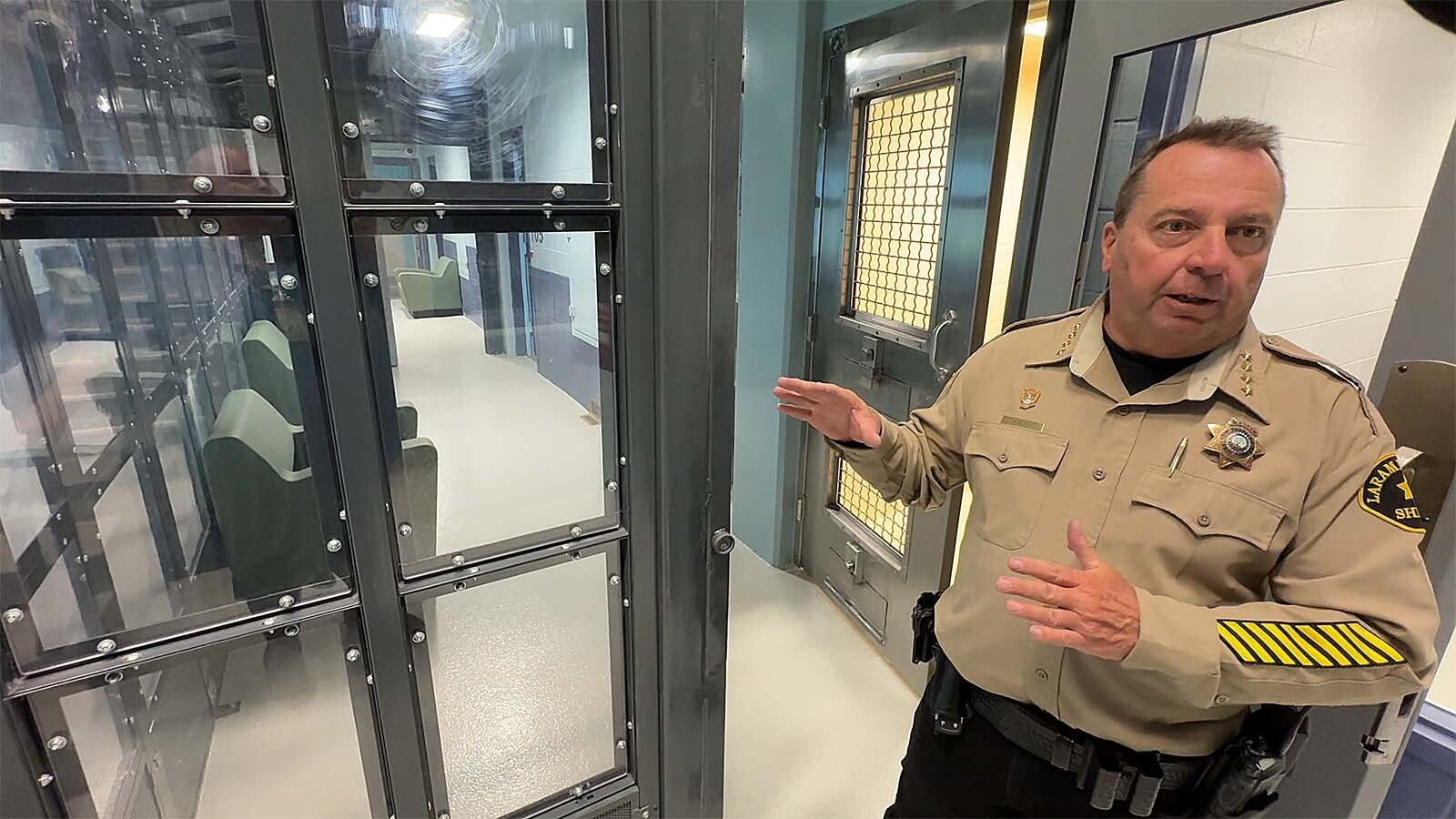A Sheridan woman whose home was destroyed in a 32-hour standoff this week between law enforcement and a man suspected of killing a local police officer has poor odds of winning back the value of her house in a federal lawsuit against the city.
But she may have a chance in state court, a pair of Wyoming attorneys told Cowboy State Daily.
The standoff started Tuesday, after William Lowery, 46, allegedly killed Sheridan Police Sgt. Nevada Krinkee then rushed to the home of Sheridan resident Karo Hamilton, where he knew the tenant renting Hamilton’s basement.
But Hamilton did not know Lowery, her daughter told Cowboy State Daily after the standoff ended.
Police reportedly were able to get Hamilton’s mother out of the home even as Lowery hid in it. Tactical teams from around the state then barraged the home with gas, water, light and loudspeaker entreaties in an attempt to get Lowery to come out.
Lowery reportedly shot from the home on at least two occasions. When agents ripped the home open with a track hoe excavator, Lowery tried to escape, armed, and was shot dead on scene.
Depends On Insurance Policy
What remains is a wreck.
The home is a disaster. One whole wall to the house is missing and passersby can peer into Hamilton’s gaping rooms, as if her home were a battered dollhouse.
While some in Sheridan have offered help, many residents are asking if Hamilton’s insurance, or the city, will be required to pay for the damage, which a local contractor says could be $200,000 or more.
As for the insurance question, it depends on the exact language of Hamilton’s policy, Rep. Clark Stith, R-Rock Springs, told Cowboy State Daily.
Hamilton’s daughter, Brookelynn Hamilton, said she doesn’t think her mother’s insurance policy covers this mode of destruction.
Karo Hamilton has not yet commented.
How To File A Claim
Hamilton could file an inverse condemnation claim against the city, said Stith, who is an attorney. Essentially, it’s a civil claim homeowners “may” file in a Wyoming district court to fight for compensation for property destroyed without permission, the law says.
“She needs to fill out an itemized statement of claim, sworn under oath and submitted to the city’s chief financial officer,” before filing the case, said Stith, adding that just in case, “I would also tender a claim to the insurance company.”
Wyoming Doesn’t Like Damage
Ryan Semerad, owner of Casper law firm Fuller and Semerad, also cited the inverse condemnation law, saying Hamilton’s chances of launching such a case are better in state court than in federal court. That’s because the Wyoming Constitution is more protective toward property owners in this area than the U.S. Constitution is.
The Fifth Amendment to the U.S. Constitution says private property shall not be “taken” for public use without just compensation.
The Wyoming Constitution takes that a step further, adding in the words “or damaged.”
Semerad called Wyoming’s added protection “good news for the homeowner,” but said there’s still a “million-dollar question” of whether the government is exempt from reimbursing the homeowner for damages caused to curb a public safety emergency.
Sheridan's mayor did not respond to a voicemail and email by publication time.
This One Time
Inverse condemnation claims tend to be an “uphill battle,” said Semerad. He said he hasn’t seen anyone win such a case.
But Stith has seen a win, he said.
That case started in 2007 when the Wyoming Department of Environmental Quality launched a dynamic compaction project — having a contractor “intentionally, repeatedly” drop a 25-ton weight from a crane more than 2,000 times in a residential neighborhood, said Stith.
Many homes suffered structural damage. Ultimately, the homeowners won compensation, he said.
Stith added that that’s the only inverse condemnation private-property victory he knows of.
“They are rare, because usually it’s the government bringing the condemnation actions,” he said. “The incident in Sheridan is rare also.”
Maybe Don’t Try This In Federal Court
Semerad said Hamilton’s chances in federal court are far worse than in state court, in part because a federal judicial panel sided with the government on this issue just one day after the Sheridan standoff ended.
A panel of judges for the Fifth Circuit Court of Appeals on Thursday ruled 11-6 against a woman who endured nearly the same ordeal Hamilton did.
Vicki Baker, of McKinney, Texas, was not home on July 25, 2020, when a fugitive barricaded himself in her house along with his 15-year-old female hostage.
The fugitive released the girl but refused to come out and threatened to shoot it out with police officers. Agents blasted holes in the walls with explosives and lobbed in gas grenades, amassing nearly $60,000 in damages to the home.
A surveillance drone later revealed the fugitive had killed himself.
The appeals panel extended its “sympathy” to Baker but ruled against her, saying governments aren’t liable for damages wreaked in an active emergency to prevent imminent harm to people.
Are You Serious Right Now
Fifth Circuit Judges Jennifer Walker Elrod and Andrew S. Oldham wrote an incredulous dissent in that case, saying the majority’s ruling broadened government’s entitlement in a way that undercut the very reasons for which the founders wrote the takings clause.
If a citizen must give up her property for the public good, then the public should reimburse her, Elrod and Oldham wrote.
Allowing broad exceptions to that “risks turning the right to private property into ‘a second-class right,’” they added.
Our Safety Versus Something We Probably Need
Another case that could come into play in a federal takings case concluded in 2019, in the federal appeals circuit encompassing Wyoming.
That case, Lech v. Jackson, is not binding precedent, but can be cited in other cases for its persuasive value.
It stems from yet another explosive standoff.
An armed criminal fugitive took refuge in a Colorado family’s home and fired on police from it.
Agents surrounded, negotiated, fired several rounds of gas, breached the doors with a Bearcat armored vehicle and created sightlines with explosives.
Police disarmed and arrested the fugitive after 19 hours.
The Lech family asked the city of Aurora to pay for their damages, and the city refused.
The 10th Circuit Court of Appeals sided with the city, saying the destruction wrought to uphold “police powers” isn’t subject to the takings clause, as opposed to destruction for the sake of “eminent domain.”
“Police powers” is a legal term referring to a government’s authority to keep its citizens safe and healthy.
“Eminent domain,” another legal term, means the government can take private property if the public needs that property, but the government has to pay the owner for it.
The 10th Circuit drew a hard line between the two.
“When a state acts pursuant to its police power, rather than the power of eminent domain, its actions do not constitute a taking,” wrote the judges.
Semerad said the logic of the 10th and Fifth Circuit Cases was probably intended to shield cops from thinking about whether they’re wracking up a big bill for the city while they’re doing what’s necessary.
Don’t Try To Sue These Cops
If there is a state claim from the Sheridan standoff, it would not be wise to try to sue police agents individually, said Semerad.
“If I was hired by the homeowners to do this — you do not sue these officers,” he said.
Police officers have qualified immunity, meaning generally, people can’t win individual lawsuits against them unless the officers knowingly violated someone’s constitutional rights.
Responding to the standoff was “part of their job,” Semerad said.
A case in state court against the town government could be viable, though it’s still uncertain how it would end, he said.
More Coverage
Sheridan Police Department Devastated As It Plans Memorial For Sgt. Krinkee
Sgt. Nevada Krinkee Remembered As Proud Family Man, Leader And Role Model
'He Just Took Over The House': Sheridan Homeowner Didn’t Know Suspected Cop Killer
Sheridan Contractor Organizing Volunteer Effort To Rebuild House Destroyed During Standoff
'A Small Whimper': Two Dogs Rescued From Sheridan Barricade House
Suspected Sheridan Cop Killer Shot, Killed While Trying To Escape
30 Hours In, Still No Surrender In Sheridan Standoff With Suspected Cop Killer
Neighbors Devastated Over Killing Of Sheridan Police Officer
Suspect In Sheridan Cop Killing Was Squatting In Rental House
Standoff In Sheridan, Wyoming Continues: Suspected Killer Reportedly Shoots At Cops
‘Come Out The Front Door!’ Standoff With Suspected Sheridan Cop Killer Hits 24-Hours
Gordon Orders Flags At Half-Staff For Slain Sheridan Police Officer
Suspected Sheridan Cop Killer Remains Barricaded In House As Standoff Nears 24 Hours
Sheridan Police Officer Killed In Line Of Duty, Suspect Barricades Himself
‘Incredibly Saddening’: Wyoming Reacts To Killing Of Sheridan Police Officer
Sheridan Police Officer Shot And Killed, Suspect In Standoff With Law Enforcement
Clair McFarland can be reached at clair@cowboystatedaily.com.










